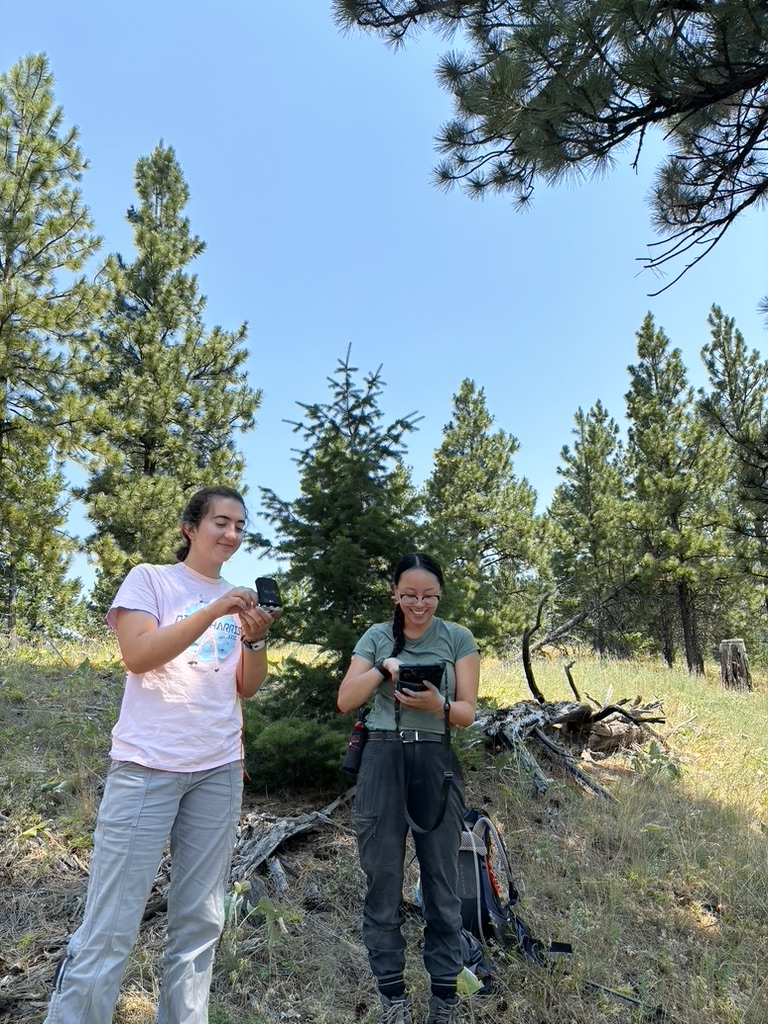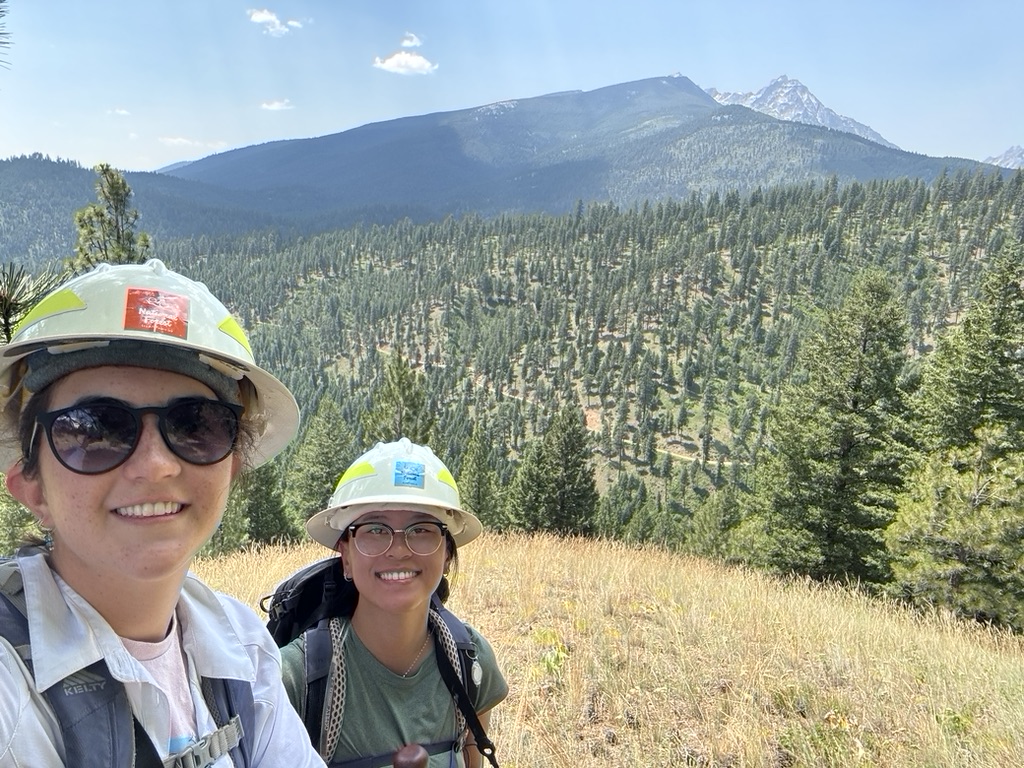These past few weeks, the nodding onions have exploded from their papery cocoon, dotting the understory with cute purple bundles. To me, these flowers seemed to come out of nowhere. During early surveys I glimpsed the little white bulb and marked down Allium cernuum in my survey form, barely sparing a thought for the plant. Then it seemed, all of a sudden, like beautiful fireworks were all around me.
I though for a moment that because they were so pretty, these plants might be the other rare onion in the Bitterroot Forest, Allium acuminatum. They were not. They were just regular old nodding onion.
As the fireworks of nodding onions began, the onion I overlooked became one of my favorite plants in the forest. I started to appreciate the bulb before the flower bloomed. When I looked closely I was able to see a neatly wrapped and protected umbel of flowers, reminding me of a caterpillar in a cocoon before it emerges in a display of beauty. I liked how the buds swelled and broke through the thin membrane surrounding them, how the buds hung in perfect little drops from the stem, how they then exploded into a ball, each bud stretching away from the others, how the petals slowly darkened from white to pink, and how green fruits swelled in the middle of each flower as the petals faded back to a wispy white. I loved that each plant seemed to go at its own speed, meaning every day I saw each step of the development in different parts of my survey, or even in a small clump of plants.








Besides admiring the nodding onion, we have done some bee surveys, seed collection, and more rare plant surveys.

The bee surveys are a part of Xerces’ Montana Bumble Bee Atlas project. The goal of this project is to track bumble bees across all of Montana. They do this by splitting the state into a grid and having trained volunteers adopt and conduct bee surveys in a grid-cell.

To conduct the survey, we find a spot to survey and time ourselves for 45 minutes. When we spot a bumble bee we catch it in the net, place it in a vial, and then put it in a cooler so it goes to sleep. Then we take pictures of the bee and record data about the flower the bee was on, the surrounding flora, and environmental conditions. When we are done taking pictures we let the bee fly away.

Our seed collection season has also begun. This means driving around the forest and looking for populations of target species that are big enough to collect, and also timing the collection when the seeds are developed but have not dispersed.

And, we have done a lot more rare plant surveys.


Here, Li and I are getting the aspect (cardinal direction) of the slope of a rare plant population.
And this is Li and me at the top of a very tall and steep hill.
This past month has been a lot of fun and I’m looking forward to our transition towards seed collection and vegetation monitoring.
